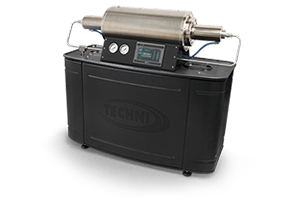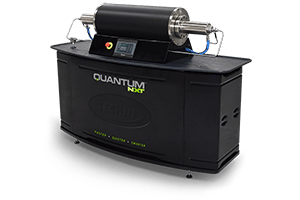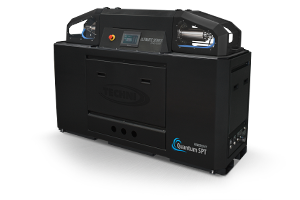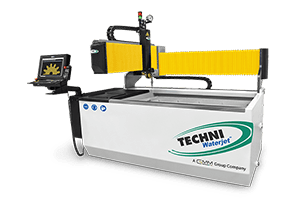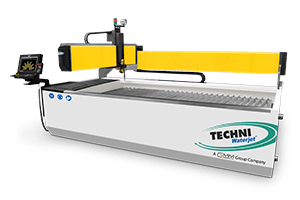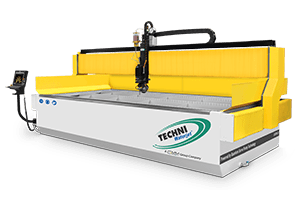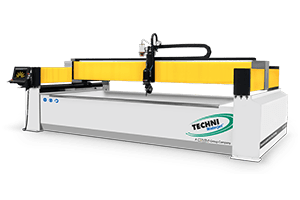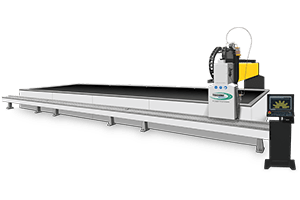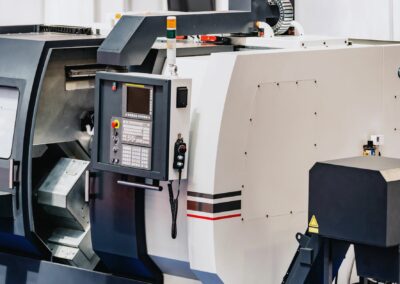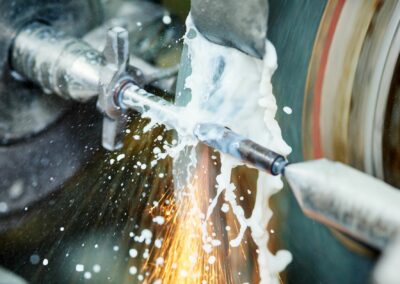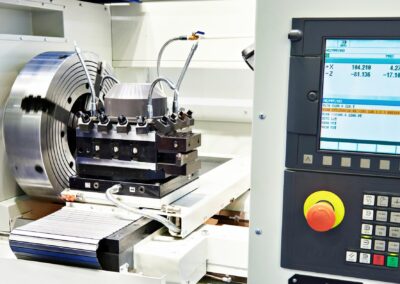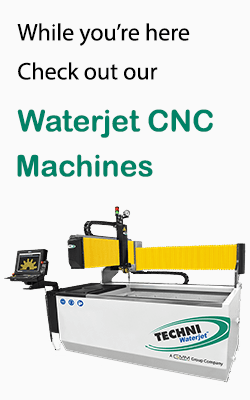In the realm of CNC machining, the advent of 5-axis technology marks a transformative era, merging unparalleled precision with complex geometries. This guide delves into the essence of 5-axis machining, a marvel that has reshaped modern manufacturing.
What is 5-Axis Machining?
5-axis machining refers to a high-precision CNC (Computer Numerical Control) multiaxis machining process that operates along five different axes simultaneously. This advanced method allows the cutting tool to move across the X, Y, Z linear axes, as well as rotate on the A and B axes to approach the workpiece from any direction.
5-axis machining stands out in its ability to efficiently produce complex parts with high precision. In this setup, a single machine performs what traditionally required multiple setups, reducing time and enhancing accuracy. The five axes of movement – X, Y, Z, A, and B – enable the cutting tool to create intricate shapes, undercuts, and sophisticated geometries that are impossible with conventional 3-axis machines.
History of 5-Axis Machining
The origins of 5-axis machining, a cornerstone in modern CNC machining, are as fascinating as the technology itself. It emerged from a need to solve complex manufacturing challenges, especially in the aerospace industry, where precision and complexity are paramount. This journey from inception to current advancements illustrates a relentless pursuit of precision and efficiency in manufacturing.
Who and When Invented 5-Axis Machining?
The inception of 5-axis machining is attributed to the innovative efforts of pioneers in the mid-20th century. It was during this era that the need for machining complex parts, particularly in the aerospace sector, led to the exploration beyond traditional 3-axis capabilities.
The exact individual or team responsible for this groundbreaking invention remains a topic of debate among historians and engineers alike. However, it’s widely acknowledged that the development was a collaborative effort, spurred by the aerospace industry’s growing demands.
How Does 5-Axis CNC Machining Work?
5-axis CNC machining stands as a paragon of advanced manufacturing technology. It’s not just about subtractive manufacturing; it’s about redefining precision and pushing the boundaries of what’s possible in CNC machining. This section will dissect the functionalities and workings of a 5-axis CNC machine, providing a clear understanding of its complex yet fascinating operations.
What Does the “5” in 5-Axis Represent?
Understanding the five axes in 5-axis machining is key to appreciating its capabilities. Each axis represents a unique direction in which the cutting tool or workpiece can move, allowing for intricate designs and high precision in manufacturing. Let’s break down the significance of each axis:
- X-Axis: This is the horizontal movement across the length of the machine bed. It’s the base movement for most CNC machines, including the 5-axis variants.
- Y-Axis: Working in conjunction with the X-axis, the Y-axis represents the horizontal movement perpendicular to the X-axis. It expands the machining capabilities from a linear to a planar field.
- Z-Axis: The vertical movement, allowing the cutting tool to move up and down. This axis is crucial for depth control in machining processes.
- A-Axis: This axis allows for rotation around the X-axis. It’s pivotal for reaching angles and sides of the workpiece that are otherwise inaccessible with just X, Y, and Z movements.
- B-Axis: Similar to the A-axis, the B-axis provides rotation but around the Y-axis. This additional rotational movement further enhances the machine’s ability to create complex geometries.
What are the Main 5-Axis Configurations?
5-axis CNC machines, known for their versatility and precision, come in various configurations. Each configuration offers unique benefits and is suited for specific applications. Understanding these configurations is essential for manufacturers and machinists to select the right machine for their specific needs.
Trunnion Table Configurations
The trunnion table configuration in 5-axis machines is a popular choice due to its robustness and precision. Here’s how it functions:
- The trunnion table is essentially a rotary table that tilts the workpiece toward the spindle, allowing access to multiple sides of the part in a single setup.
- This configuration is known for its high level of stability and support, especially for heavy or large workpieces.
- The trunnion setup minimizes the need for multiple setups, reducing time and enhancing accuracy.
- It’s ideal for complex parts, such as aerospace components, where precision is paramount.
Swivel Head Configurations
Swivel head configurations offer a different approach to 5-axis machining:
- In this setup, the spindle head moves instead of the table. The head can swivel and rotate, providing the additional axes of motion.
- This configuration allows for more flexibility in tool positioning and angle, which is crucial for intricate designs and complex geometries.
- Swivel head machines are typically faster and more dynamic, suitable for detailed and precise work where the tool needs to approach the workpiece from various angles.
- They are often preferred for smaller parts where the high degree of articulation and speed can be fully utilized.
What are the Different Types of 5-Axis CNC Machines?
5-axis CNC machines come in various types, each with distinct configurations and capabilities. Understanding these types is crucial for manufacturers to harness the full potential of 5-axis technology in their specific applications.
Head/Head 5-axis Machines
Technical Description: Head/Head 5-axis machines feature both a rotating and tilting head. This dual movement allows for complex machining tasks with high precision.
Advantages:
- Enhanced precision and flexibility in tool positioning.
- Ability to machine complex shapes and intricate details.
- Reduced need for multiple setups, enhancing productivity.
Applications:
- Ideal for aerospace components and automotive parts.
- Suitable for intricate molds and dies.
- Preferred in applications requiring high geometric accuracy.
Table/Head 5-axis Machines
Technical Description: In Table/Head 5-axis machines, the table rotates and tilts, while the head mainly moves along the linear axes.
Advantages:
- Greater stability for heavy or large workpieces.
- Efficient in handling a variety of part geometries.
- Suitable for both roughing and finishing operations.
Applications:
- Effective for large aerospace parts and heavy industrial components.
- Used in energy sector manufacturing, like turbine blades.
- Favorable for large mold and pattern making.
Table/Table 5-axis Machines
Technical Description: Table/Table 5-axis machines involve a table that can perform both rotating and tilting actions, offering distinct operational benefits.
Advantages:
- Excellent for parts requiring simultaneous 5-axis movements.
- High precision and control over complex geometries.
- Versatile in handling different sizes and shapes of workpieces.
Applications:
- Suitable for medical industry components like implants.
- Utilized in the high-precision manufacturing of complex parts.
- Ideal for custom or specialized machining tasks.
What are different processes that utilize 5-axis machines?
5-axis CNC machines are not just limited to traditional milling operations. Their versatility allows them to be used in a variety of processes, each taking advantage of their unique capabilities to enhance production and efficiency. Here’s a look at some of the different processes that utilize 5-axis machines:
- 5-Axis Milling: The most common application, where the machine performs cutting operations on a workpiece from five different axes simultaneously. Ideal for complex shapes and high-precision parts.
- 5-Axis Waterjet Cutting: Utilizes a high-pressure water stream, sometimes mixed with abrasives, to cut materials. 5-axis waterjet cutting is used for cutting intricate designs and shapes in a variety of materials, from metals to composites.
- 5-Axis Laser Cutting: Employs a focused laser beam to cut or engrave materials. This process is renowned for its precision and is widely used in the electronics and aerospace industries.
- 5-Axis Grinding: Involves the use of a rotating abrasive wheel to remove material from a workpiece. This is particularly useful for producing high-precision parts and tools.
- 5-Axis Plasma Cutting: Similar to waterjet cutting, but uses a plasma torch to cut through electrically conductive materials, such as steel and aluminum. This is commonly used in the automotive and construction industries.
What Parts Are Suitable for 5-Axis Machining?
5-axis machining, with its advanced capabilities, is particularly well-suited for parts that require complex geometries and high precision. Different types of parts benefit from the unique capabilities of 5-axis CNC machines, which allow for intricate designs and superior surface finishes. Below are some of the parts that are most suitable for 5-axis machining.
Complex Surface Parts
These parts are characterized by their intricate surfaces and detailed geometries.
Typical characteristics:
- Non-linear surfaces, requiring intricate tool paths.
- Complex geometries that are impossible to machine with 3-axis machines.
- High precision requirements with tight tolerances.
Applications:
- Aerospace components like turbine blades.
- Automotive parts such as engine components.
- Medical implants requiring complex shapes and superior surface finishes.
Disc Parts
Disc parts are circular and flat, often requiring precision machining on both sides.
- Typical characteristics:
- Requires uniform machining on both faces.
- Often involves intricate patterns and precise holes.
- Demands high accuracy for balance and symmetry.
- Applications:
- Automotive brake discs.
- Precision gears and flywheels.
- Components in machinery that require rotational balance.
Box Type Parts
These are parts with a predominantly cubic or box-like shape, needing precise machining on multiple faces.
Typical characteristics:
- Requires machining on several faces, often in a single setup.
- Precision in corner detailing and edge finishing.
- Varied sizes, from small boxes to large machine housings.
Applications:
- Housing for electronic devices and machinery.
- Components of tooling machines.
- Parts requiring internal pocketing and complex external geometries.
Special-Shaped Parts
Special-shaped parts are those with unique, non-standard geometries.
Typical characteristics:
- Unconventional shapes requiring adaptive tool paths.
- Complex internal structures and channels.
- High degree of customization and precision.
Applications:
- Customized parts for specialized machinery.
- Prototypes and parts for the research and development sector.
- Artistic and decorative pieces requiring high detail and precision.
What are the various applications of 5-axis Machining and Industries That Benefit from it?
5-axis CNC machining, with its unparalleled precision and versatility, finds applications across a diverse range of industries. This advanced technology has revolutionized the way complex parts are manufactured, providing solutions to some of the most challenging production demands.
Aerospace Industry
The aerospace industry greatly benefits from the capabilities of 5-axis machining, particularly for components that require high precision and complex geometries.
- Turbine blades with complex profiles and tight tolerances.
- Structural components of aircraft, requiring precise machining.
- Engine parts that necessitate intricate shapes and smooth surface finishes.
Medical Industry
In the medical industry, the accuracy and adaptability of 5-axis machining play a vital role, especially for custom and complex components.
- Orthopedic implants like joint replacements, requiring high precision.
- Surgical instruments with intricate designs.
- Custom prosthetics tailored to individual patient needs.
Electronic Devices
The electronics industry, known for its miniature and precise components, utilizes 5-axis machining for its high precision and efficiency.
- Components of smartphones and computers, requiring fine detailing.
- Connectors and enclosures with complex shapes.
- Printed circuit board (PCB) hardware and heat sinks with precise dimensions.
Energy Sector
5-axis machining contributes significantly to the energy sector, especially in the production of components for renewable energy sources.
- Wind turbine parts, including gears and rotors.
- Components for solar panels, requiring precise dimensions.
- Parts for hydroelectric power plants, including complex turbine blades.
How to Maximize 5-Axis Machining Efficiency?
5-axis CNC machining offers unparalleled opportunities for producing complex parts with high precision. However, maximizing the efficiency of 5-axis machines requires a strategic approach, focusing on software, tool-detection systems, collision prevention, and mastering the art of milling. Here, we explore these critical areas.
Importance of Software and Controls
The software and controls in 5-axis machining play a pivotal role in maximizing efficiency and precision.
- Advanced software allows for precise control over the toolpath, ensuring accurate and efficient machining.
- Up-to-date CNC controls enhance the machine’s responsiveness, allowing for quicker adjustments and more accurate machining.
- Integrated software solutions facilitate seamless communication between design and production, minimizing errors and enhancing productivity.
Implementing Tool-detection Systems
Tool-detection systems are essential for maintaining efficiency in 5-axis machining.
- These systems monitor tool wear and breakage, alerting operators before they cause issues.
- Automatic tool measurement and compensation save time and reduce human error, ensuring consistent machining quality.
- Implementing these systems can significantly reduce downtime and increase overall production throughput.
Preventing Collisions
Collision prevention is crucial in maintaining the integrity of both the machine and the workpiece.
- Advanced simulation software predicts potential collisions and allows operators to make necessary adjustments before actual machining.
- Setting appropriate safety margins and employing real-time monitoring systems can prevent costly accidents.
- Regular training for operators on collision avoidance strategies is essential for maintaining a safe and efficient workspace.
Understanding the Art of 5-Axis Milling
Mastering 5-axis milling is both a science and an art, requiring a deep understanding of the machine’s capabilities and limitations.
- Operators should have a thorough knowledge of the properties of materials being machined to optimize tool paths and speeds.
- Understanding the dynamics of 5-axis movements helps in programming efficient and effective machining strategies.
- Continuous learning and experimentation with different techniques and tools can lead to innovative approaches that enhance efficiency.
What are the Advantages of 5-Axis CNC Machining?
5-axis CNC machining has revolutionized the manufacturing industry, offering a plethora of advantages that enhance production capabilities. Here are some of the key benefits:
- Complex Shapes: The ability to machine complex shapes and intricate designs that are impossible with traditional 3-axis machines.
- High Precision and Repeatability: Exceptional precision in machining, ensuring parts are consistently produced with high accuracy.
- Improved Setup Efficiency: Reduced setup times as multiple sides of a part can be machined in a single setup, enhancing production efficiency.
- Quality Surface Finish: The ability to achieve superior surface finishes, reducing the need for additional finishing processes.
- Faster Material Removal: Efficient material removal rates, especially in complex parts, speeding up the production process.
Drawbacks of 5-Axis CNC Machining
While 5-axis CNC machining offers significant advantages, it also comes with certain limitations and challenges:
- High Cost: The initial investment and maintenance costs for 5-axis machines are generally higher than for traditional CNC machines.
- Programming Complexity: Creating programs for 5-axis machining can be more complex, requiring advanced software and skilled programming.
- Required Skilled Operators: Operating and troubleshooting 5-axis machines demand a higher level of skill and training.
Demystifying Common Myths about 5-Axis Machining
5-axis CNC machining, while a game-changer in precision manufacturing, is often surrounded by misconceptions. Addressing these myths is crucial to understanding the true capabilities and limitations of this technology.
Myth: 5-Axis is Only for Complex Parts
- Reality: While 5-axis machining excels in producing complex parts, its benefits are not limited to them. It also enhances the efficiency and precision of simpler parts.
- Wider Application: 5-axis machines are versatile, suitable for a range of parts from basic to intricate designs, offering improved access to the workpiece and reducing the need for multiple setups.
Myth: It’s More Expensive than It’s Worth
- Reality: The initial investment in 5-axis machines can be higher, but the long-term benefits often outweigh the costs.
- Cost Efficiency: Reduced setup times, improved surface finishes, and the ability to produce complex parts in a single setup can lead to significant cost savings in the long run.
Myth: The Learning Curve is Too Steep
- Reality: While 5-axis machining involves a learning curve, the advancement in user-friendly software and training resources has made it more accessible.
- Manageable Training: Manufacturers are increasingly providing comprehensive training, making it easier for operators to transition from 3-axis to 5-axis machining capabilities.
Cost Implications of 5-Axis CNC Machining
5-axis CNC machining, while offering unparalleled capabilities in precision manufacturing, comes with its own set of economic considerations. Understanding these cost implications is vital for businesses looking to invest in this technology.
How much does 5-Axis CNC Machining Typically Cost?
The cost of 5-axis CNC machining varies significantly based on several factors including machine complexity, material requirements, and the specific requirements of the project.
- Average Cost per Hour: The hourly cost for 5-axis CNC machining can range widely. On average, businesses might expect to pay anywhere from $75 to $250 per hour, depending on the complexity of the part and the level of expertise required.
- Average Price for 5-Axis CNC Machines: The price for 5-axis CNC machines also varies. Entry-level machines can start from around $30,000, while more advanced machines, especially those used in high-precision industries like aerospace and automotive, can exceed $500,000.
Factors Influencing Price
- Machine Size and Capability: Larger machines with higher capabilities tend to be more expensive.
- Software and Controls: Advanced software and control systems can add to the cost.
- Brand and Model: Prices can vary significantly between different brands and models.
- Additional Features: Features like enhanced cooling systems, higher spindle speeds, and additional axes of rotation can increase the cost.
5-Axis Machining Alternatives
3-Axis vs. 5-Axis Machining: What’s the Difference?
The world of CNC machining is diverse, with 3-axis and 5-axis machines offering different capabilities, advantages, and limitations. Understanding these differences is essential for selecting the right machining process for specific manufacturing needs.
What are the differences between 3+2 and 5-axis machining?
- 3+2-Axis Machining: This involves a 3-axis machine with two additional degrees of freedom, allowing the tool to approach the workpiece from any direction. However, these additional axes don’t operate simultaneously. The primary advantage of 3+2 axis machining lies in its simplicity and cost-effectiveness for less complex parts. It’s ideal for parts that need multiple angular positions but don’t require the simultaneous movement of all five axes. This makes it a suitable choice for a wide range of applications, especially where the complexity of 5-axis machining is not necessary.
- 5-Axis Machining: All five axes operate simultaneously, allowing for complex shapes and undercuts to be machined efficiently. The ability to maintain an optimal cutting angle and constant chip load leads to faster cutting speeds, higher precision, and better surface finishes. This simultaneous operation is particularly beneficial for aerospace components, medical devices, and intricate molds that demand precise contouring and detail. Another significant advantage is the reduced setup time, as the part doesn’t need to be repositioned multiple times.
Moreover, 5-axis machines often come with advanced software and control systems that enhance their capabilities. These systems provide greater flexibility in tool path planning and can significantly reduce the risk of tool interference, which is particularly useful in complex machining operations.
While 3+2-axis machining offers simplicity and cost efficiency for less complex parts, 5-axis machining provides superior precision, flexibility, and efficiency for intricate and complex geometries.
5-axis machining vs 3d printing
Comparing 5-axis machining and 3D printing reveals distinct advantages in different areas:
- Precision: 5-axis machining typically offers higher precision compared to 3D printing.
- Material Range: While 3D printing is versatile with materials, 5-axis machining can handle a broader range of industrial-grade materials.
- Production Speed: 3D printing is generally slower than 5-axis machining for most materials and part sizes.
- Surface Finish: 5-axis machining usually provides a better surface finish.
- Complexity and Geometries: Both methods can produce complex geometries, but 5-axis machining has an edge in terms of precision and surface finish.
- Cost: The cost-effectiveness depends on the volume and complexity of parts. 3D printing can be more cost-effective for small runs and complex geometries.
- Winner: Both have their place, but 5-axis machining is generally preferred for high precision, high-quality surface finish, and faster production for larger volumes.
Conclusion
In the dynamic realm of CNC machining, 5-axis technology stands as a beacon of innovation, transforming complex designs into tangible realities with unmatched precision and efficiency. This comprehensive guide has journeyed through the intricate layers of 5-axis machining, illuminating its capabilities, applications, and transformative impact on modern manufacturing, setting the stage for a future where limits are redefined and possibilities are endless.
